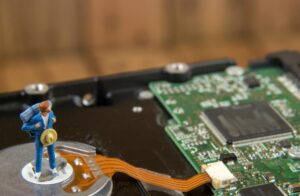Complete Guide on Flex PCB Stiffener
2022-10-26Printed circuit board stiffeners provide important mechanical support for PCBs and are often used for flexible circuit boards.
When flexible circuit board components are placed in curved areas and pressure is applied to the flexible material, stiffeners are required to add mechanical strength.
But we need to understand that the PCB stiffener is not part of the board design. Let's learn more about the role of stiffener and its use.
Where to use stiffener?
Simply put, when the PCB needs to increase the stiffness of the place will need to use stiffener.
- Support areas with SMT or PTH components
- To maintain the proper thickness of the flexible circuit
- Connector areas
- Areas to keep the circuit stable
- When limiting flexible parts to a certain position
- Increasing the bending radius of the circuit at the intersection of rigid and flexible parts
- Protects solder joints
- Comply with ZIF connector specifications
How to choose the right PCB stiffener material?
Flexible PCB currently commonly used stiffener materials are polyimide (PI), FR4 and steel sheet.
- Polyimide (PI), composed of PI, cover film and adhesive release paper, but the PI layer is thicker.
- FR4, mainly composed of glass fiber cloth and epoxy resin adhesive, the same as the FR4 material used in PCB
- Steel sheet. The components are steel, with strong hardness and support strength, requires manual assembly, and the process is more complex assembly costs are higher.
How to use printed circuit board stiffener?
In the case of plated through-hole components, the PCB stiffener is located on the same side of the flexible board as the components. This makes it easier to access the pads on the flex circuit. Stiffeners can also be attached to both sides of the part.
Heat and pressure are used when attaching the stiffener to the circuit. Connecting PCB stiffeners requires the use of pressure-sensitive adhesives, commonly used are
- Pressure sensitive adhesives
- Thermal bonding adhesives
The type of adhesive depends on the location and/or construction of the stiffener. For example, if the stiffener does not extend to the circuit outline, in most cases it will require a PSA attachment with additional stiffener outline added to the screen for precise placement.
How to distinguish between rigid-flexible PCBs and rigid PCBs using FR4 stiffener?
- A circuit board with stiffener is still essentially a flexible PCB, with FR4 stiffener bonded to it to increase rigidity during assembly
- Rigid-flexible circuits are known as hybrid flex circuits that include both rigid and flexible substrates, and by definition, rigid-flexible boards are not flex circuits.
- The use of stiffener of the flexible PCB stiffener part is no trace, only to enhance the rigidity of the location, they are only mechanical connection between. While the rigid-flexible PCB are designed traces for electrical connections.
To summarize
Use PCB stiffener to protect the components and connectors of flexible circuit swell, to ensure that the circuit does not bend and protect the integrity of the solder joints.
Explore KingPCB's services
KingPCB, one of the leading PCB manufacturers in China, has extensive experience in manufacturing and assembling rigid PCBs, flexible PCBs and rigid-flex PCBs.
For more information about our PCB supply capabilities, please feel free to email us at sales@kingpcb.com or contact us now!




